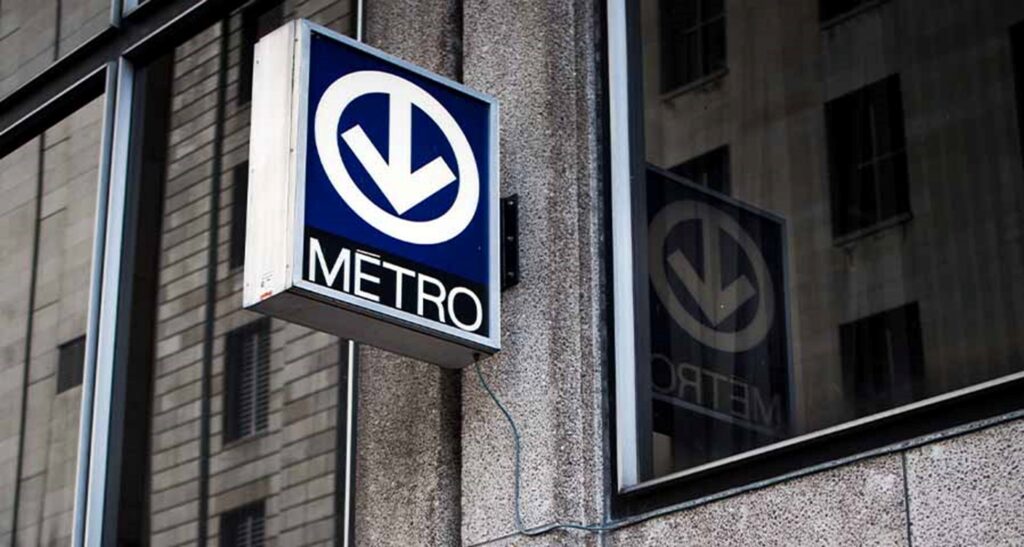Daylighting Controls & Daylight Savings: Optimizing Natural Light Through the…
Studies have shown that natural lighting has proven to improve workplaces by helping employees be more…

Upgrading fluorescent cabinet signs to LED technology offers substantial benefits, including reduced energy use, lower maintenance costs, and brighter, more consistent illumination. However, a successful LED cabinet sign retrofit isn’t as simple as swapping out bulbs. Each sign can vary in design, structure, and wiring, introducing unique challenges that must be considered before starting the project.
Cabinet signs have been a mainstay in exterior advertising for decades, and most older installations rely on fluorescent lamps. According to the U.S. Department of Energy, linear fluorescent lighting still accounts for more than three-quarters of the energy used by commercial signs and buildings. Replacing these inefficient systems with LEDs can reduce energy use by over 60 percent, extend lamp life up to five times longer, and significantly reduce maintenance.
But while the benefits are clear, no two cabinet sign retrofits are exactly the same. A retrofit in one location might be straightforward, while another could require structural adjustments or rewiring. Before replacing fluorescent lamps, consider the following factors to ensure an efficient and safe upgrade.
Businesses with multiple locations often discover that their cabinet signs differ in size, layout, or even age. This means the internal lighting components may vary as well. Some locations may use 10-foot fluorescent tubes, while others use shorter lamps or different fixture types. Since LED tubes typically come in standardized lengths such as 4-foot and 8-foot sizes, a one-size-fits-all approach won’t work.
An alternative option during an LED cabinet sign retrofit is to use LED strip lighting rather than direct tube replacements. Strip lighting offers flexibility, allowing technicians to retrofit irregularly sized cabinets or create more uniform illumination without relying on the original fluorescent form factor.
One of the most overlooked challenges during a retrofit involves the socket and ballast configuration. Fluorescent fixtures typically use ballasts to regulate current flow, but LED tubes operate differently. Depending on the LED type, UL Type A, B, or C, the approach changes:
Socket compatibility is also critical. Fluorescent fixtures that have never been modified generally have non-shunted sockets, while those with instant-start ballasts may have shunted sockets. Since some sockets are internally shunted, visual inspection alone won’t confirm the wiring type. Testing both contacts with a voltmeter to determine if a circuit is closed (shunted) or open (non-shunted) is a vital safety step before installation.
Another challenge lies in the physical accessibility of signs. Signs installed at varying heights require different equipment and safety measures. A retrofit that involves cabinet signs at 20 feet versus 35 feet will demand different lift sizes, crew setups, and installation times. Accounting for these variables ahead of time prevents project delays and unexpected costs.
Whether you manage one sign or hundreds across multiple properties, maintaining accurate lighting component data simplifies retrofit planning. Information such as lamp lengths, fixture types, socket configurations, and sign height ensures that retrofit kits are ordered correctly and installations proceed smoothly. A site survey can identify compatibility issues before the retrofit begins.
Converting fluorescent cabinet signs to LED tubes or strips should always follow local electrical codes and safety standards. Start by shutting off the main power and verifying that no voltage is present at the lamp holders. For older signs without disconnect switches, adding one ensures code compliance and safety during future maintenance.
During conversion, remove existing fluorescent lamps and, if applicable, bypass or replace the ballast based on your LED type. When using LED sign tubes, keep in mind that these are often designed for 360° illumination, using an optical lens to eliminate hot spots and provide uniform light across the sign face. Quality LED tubes typically meet UL 48 and UL 879A standards, with lifespans exceeding 50,000 hours.
While initial costs can vary, the savings from reduced maintenance and energy consumption quickly offset the investment. Fluorescent lamps are costly and time-consuming, generally last around 10,000 hours, and require frequent replacements, often involving cranes or aerial work. LEDs drastically cut those service needs while providing brighter, more consistent illumination that enhances brand visibility.
A well-executed LED cabinet sign retrofit delivers lasting energy savings, improved performance, and enhanced visual appeal. But it requires careful evaluation of existing components, sign structure, and electrical configurations. Understanding your site data, planning for variations in sign design, and selecting the right LED type or strip solution are critical to a safe and effective upgrade.
Action Services Group can ensure your organization’s signage not only shines brighter but also operates more efficiently for years to come through our on-demand and scheduled signage maintenance solutions. To learn more, call 610-558-9773, email [email protected], or schedule a consultation that fits your schedule.